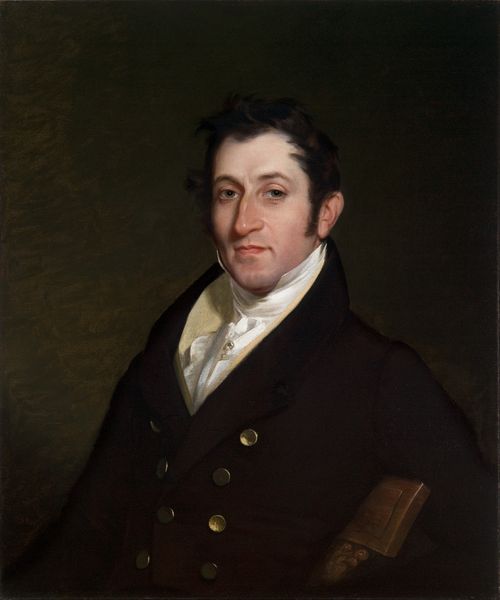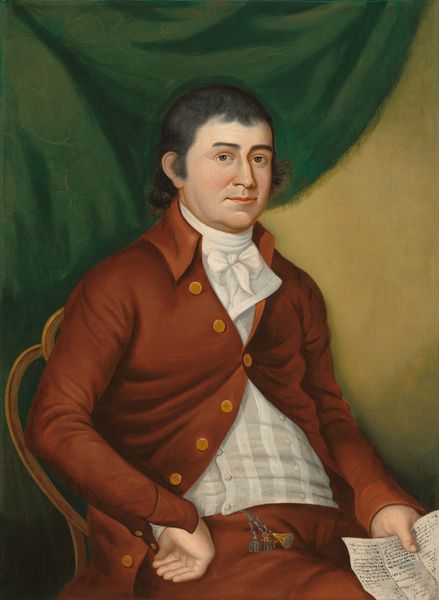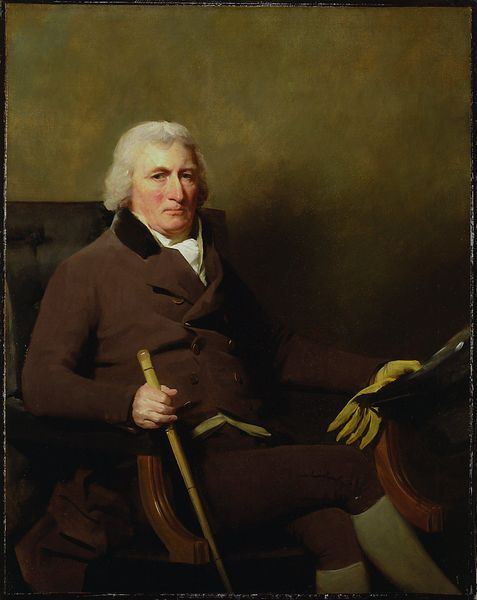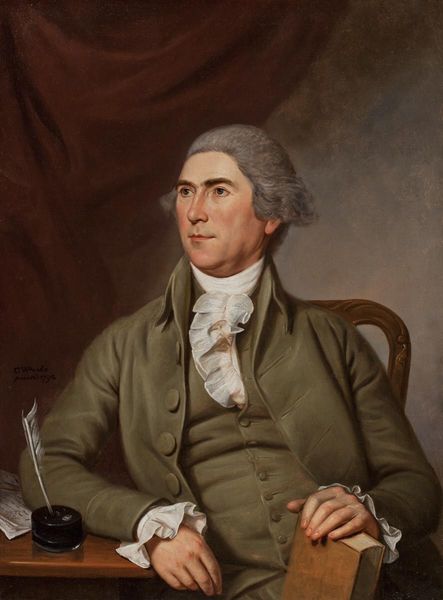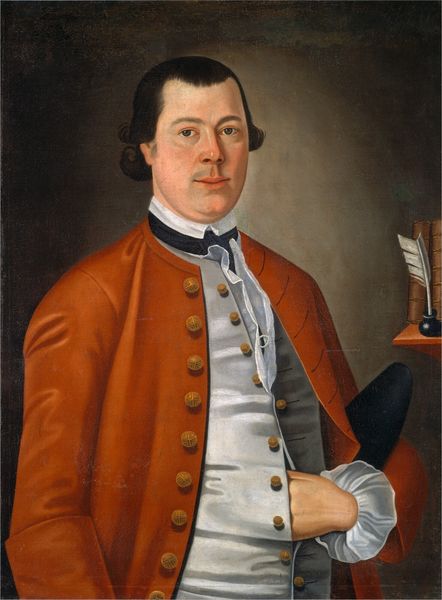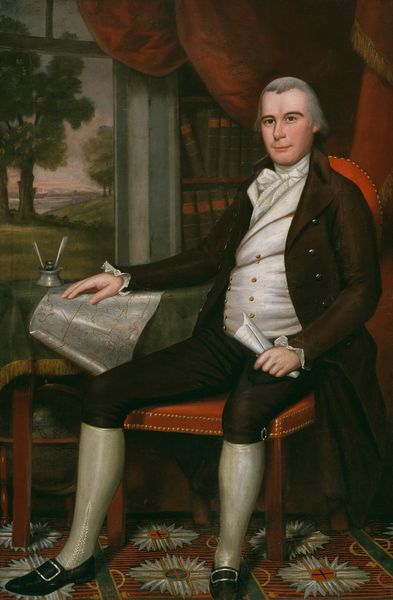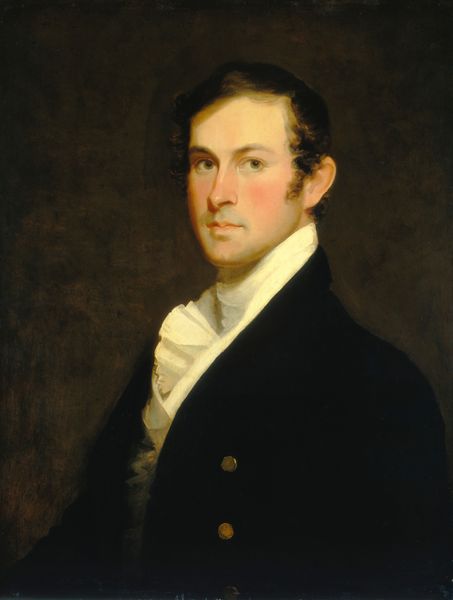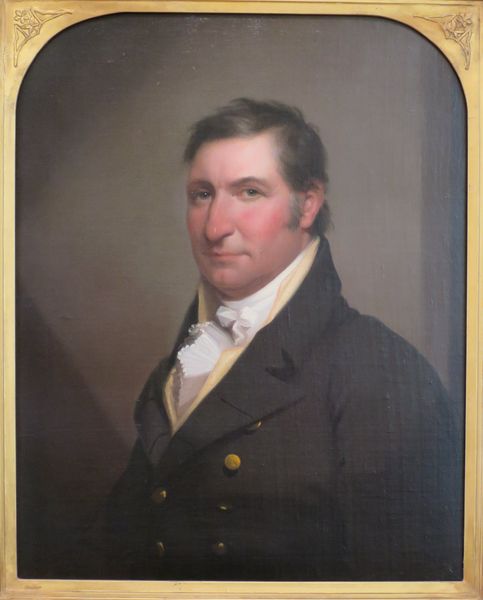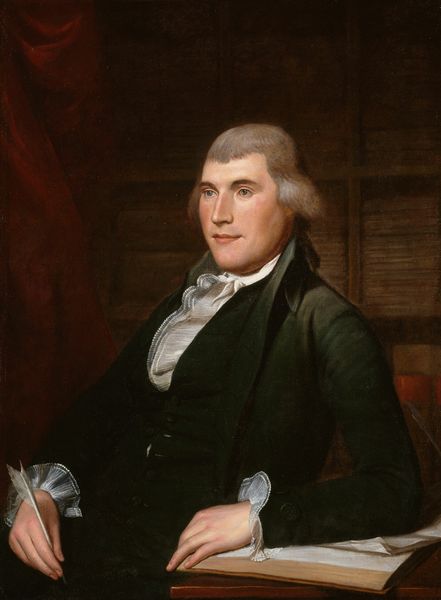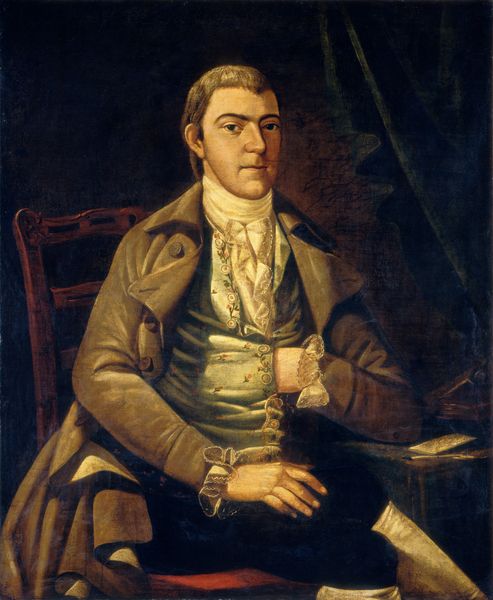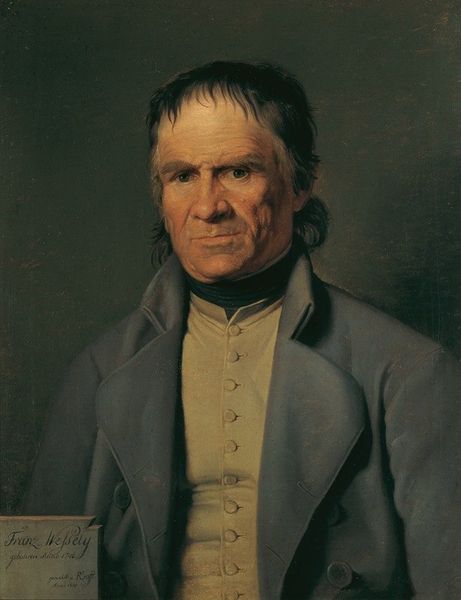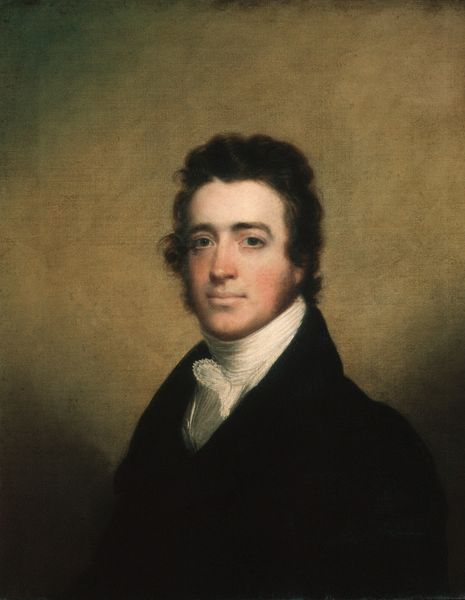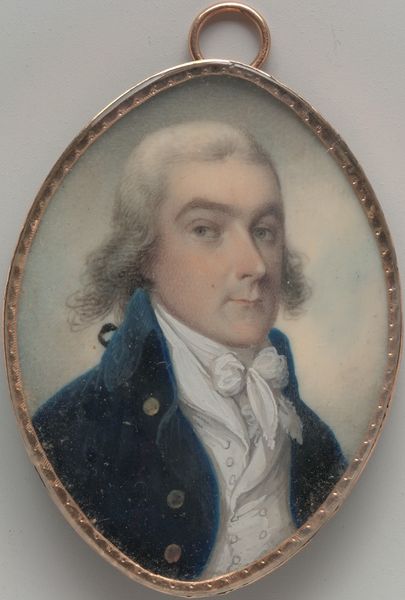
painting
#
portrait
#
neoclacissism
#
painting
#
academic-art
#
realism
Dimensions: 36 1/8 x 29 3/4 in. (91.8 x 75.6 cm)
Copyright: Public Domain
Curator: Standing before us is "Job Perit," a painting dating back to 1790 by Reuben Moulthrop, now residing here at The Met. Editor: There's a stillness to it, a quiet confidence. And something about the monochromatic palette – the teals and grays – makes me think of quiet industry and deliberation, of inventories and careful measurements. Curator: Moulthrop, as you might have noticed, paints in a very particular way. There’s a precision that aims for realism, but also a certain stylized quality. His figures possess this unwavering gaze that invites us into their world. Editor: The texture of the clothing draws me in, particularly the jabot—all those delicate frills and pleats. How many hours did it take to render all of that in paint, and how many to produce that jabot from linen? It must speak of the status afforded by labor both enslaved and free. Curator: It’s like gazing back in time at the newly forming republic – at these individuals forging a new nation, negotiating what they want it to be. It is really quite something, this capturing of a particular moment. Editor: The very materiality—the pigments, the canvas—each had their own provenance. It all connects to resource extraction and distribution networks… Did the canvas originate domestically? Did the artist mix his own paint, grinding and suspending his pigment, or could he access readily available prepared materials? I love thinking about how this connects us to the social landscape. Curator: And Perit’s expression suggests to me both seriousness and intelligence, yet softened by a knowing, slight smile. I find this mix inviting, even soothing. There's an undeniable human connection woven through time. Editor: To think about the work and the processes of producing it—from agriculture to distribution—anchors it. Perhaps the artist was making something of a social commentary by portraying the industrious, entrepreneurial spirit as refined, civilized, and distinctly masculine. Curator: I'm reminded how art enables us to commune, observer and observed, painter and subject, all bound by a canvas stretched across centuries. Editor: Yes, seeing the artwork as a node within larger economic systems makes it really, truly, visible.
Comments
No comments
Be the first to comment and join the conversation on the ultimate creative platform.
